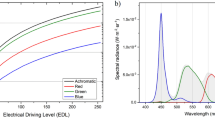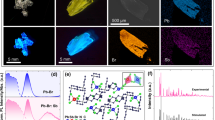Abstract
THE phenomena of breath-figures on glass are of considerable interest, and have been written upon in the columns of NATURE by the late Lord Rayleigh, Dr. John Aitken, and others. One specially interesting aspect of the subject to which I have recently devoted some attention is the explanation of the beautiful optical effects exhibited by breathed-on plates of glass. If a clean, cold plate of glass is lightly breathed on and then held in front of the eye, and if a small distant source of light is viewed through it, coloured haloes will be seen surrounding the source. The characteristic feature of the halo exhibited by a moderately heavy (but not too heavy) deposit is that the outermost ring in it is achromatic, with a reddish or brown inner margin, followed inside by a succession of rings of various colours. As the film of moisture evaporates, the halo contracts and the coloured rings move inwards, ultimately disappearing at the centre of the halo. The entire halo presents a radiating fibrous structure.
This is a preview of subscription content, access via your institution
Access options
Subscribe to this journal
Receive 51 print issues and online access
$199.00 per year
only $3.90 per issue
Buy this article
- Purchase on SpringerLink
- Instant access to full article PDF
Prices may be subject to local taxes which are calculated during checkout
Similar content being viewed by others
Author information
Authors and Affiliations
Rights and permissions
About this article
Cite this article
RAMAN, C. The Colours of Breathed-on Plates. Nature 107, 714 (1921). https://doi.org/10.1038/107714b0
Published:
Issue date:
DOI: https://doi.org/10.1038/107714b0



